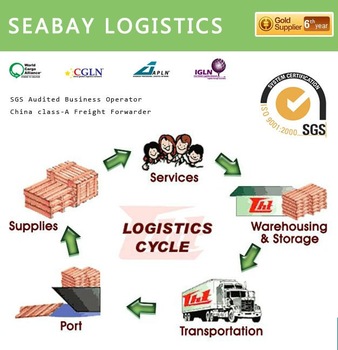Contents:


The three primary types of 501c3 organizations are public charities, private operating foundations, and private foundations. More in depth, a 501c3 is a nonprofit corporation considered by the IRS to be either a “public charity” or a “private foundation” under section 501 of the Internal Revenue Code. Upon filing the required documents and receiving IRS tax-exempt status, such an organization is tax-exempt, meaning that it is not required to pay taxes on donations made to it, or even on certain forms of income made by the organization. Being “501” means that a particular nonprofit organization has been approved by the Internal Revenue Service as a tax-exempt, charitable organization. “Charitable” is broadly defined as being established for purposes that are religious, educational, charitable, scientific, literary, testing for public safety, fostering of national or international amateur sports, or prevention of cruelty to animals and children.
The 501 organization’s management should review the grant application from the foreign organization, decide whether to award the grant based on the intended use of the funds, and require continuous oversight based on the use of funds. Certain activities or expenditures may not be prohibited depending on the facts and circumstances. For example, certain voter education activities conducted in a non-partisan manner do not constitute prohibited political campaign activity. In addition, other activities intended to encourage people to participate in the electoral process, such as voter registration and get-out-the-vote drives, would not be prohibited political campaign activity if conducted in a non-partisan manner. ProPublica’s Nonprofit Explorer provides copies of each organization’s Form 990 and, for some organizations, audited financial statements.

In order for a what is an enrolled agent or other qualifying entity to receive 501 status, it must apply to the IRS for recognition by filing Form 1023 (or Form 1023-EZ), Application for Recognition of Tax Exemption. The application is a thorough examination of the organization’s structure, governance and programs. Further, lobbying, propaganda or other legislative activity must be kept relatively insubstantial5. Intervention in political campaigns or the endorsement/anti-endorsement of candidates for public office is strictly prohibited.
Get Better at Grants Every Week
A 501 organization must meet several additional requirements to receive the benefits of tax exemption, including being operated solely for exempt purposes. The organization can’t be operated for the benefit of any private interest; its net earnings can’t benefit any private shareholder or individual. Nonprofits can make a profit, but that profit must support only charitable purposes. A 501 organization starts as a nonprofit corporation, then becomes a federally tax-exempt charity that does not pay income or sales tax, and allows donors to write off contributions. Many for-profit organizations, and some nonprofit organizations, set up related 501 organizations to do charitable work.
Governance of a private foundation may be much more closely held than a public charity. Common example of private foundations are those established by wealthy families and those that provide assistance through scholarships; however, most private foundations are not readily considered by most as nonprofits. Like other 501 organizations, contributions to private foundations may be deducted from the donor’s income in an amount not exceeding 30 percent of the donor’s income. Section 501 is the portion of the US Internal Revenue Code that allows for federal tax exemption of nonprofit organizations, specifically those that are considered public charities, private foundations or private operating foundations. It is regulated and administered by the US Department of Treasury through the Internal Revenue Service.
Step 1: Decide on the Cause You Want to Support
Candid’s Online Librarian service will answer your questions within two business days. Candid Learning offers information and resources that are specifically designed to meet the needs of grantseekers. Strictly Necessary Cookie should be enabled at all times so that we can save your preferences for cookie settings.
By defining these things, you’ll ensure that your nonprofit is focused and purposeful in all it does. A vision statement is a longer statement that describes your nonprofit’s long-term goals. It should be aspirational and inspire others to support your cause. While a mission statement discusses the organization’s objectives, the vision statement discusses the organization’s aspirations and what it ultimately hopes to accomplish. Museums and zoos are typically classified as private operating foundations, as well as some libraries and research facilities. Hospitals, schools, universities, and medical research organizations are generally classified as public charities.
Most of the time, private foundations are nonprofits that support one or more charitable organizations via grants. They exist to conduct charitable activities, but in an indirect way. A 501 organization is a United States corporation, trust, unincorporated association or other type of organization exempt from federal income tax under section 501 of Title 26 of the United States Code.
Starting and Managing a Nonprofit Organization: A Legal Guide
Typically, individuals can make donations for up to half of their adjusted gross income and still get the tax break. To create a 501, you must define the type of organization and its purpose or mission. Before selecting a name, search to ensure that it is not taken. If available, secure the name by registering it with your state. Otherwise, secure the name when filing the articles of incorporation.
Use knowledge and skills to manage financial resources effectively for a lifetime of financial well-being. It’s the perfect way to ensure all your funds and energy are directed into your charity rather than going through the tax and hassle of doing the same work without the 501c3 tax-exempt structure. However, many may still choose to do so anyway to ensure that all donations are kept tax-exempt. There are 29 different 501 organization classifications that cover everything from welfare programs to Black Lung Benefit Trusts, but 501 is the most common form of charity.
- More in depth, a 501c3 is a nonprofit corporation considered by the IRS to be either a “public charity” or a “private foundation” under section 501 of the Internal Revenue Code.
- According to the National Center for Charitable Statistics more than 1.5 million nonprofit organizations are registered in the United States.
- Discover the benefits of early childhood accreditation, learn about the four step process,find support and resources for your program or login to the accreditation portal.
- After you’ve defined your nonprofit’s mission, vision, and values, you’ll need to prepare your nonprofit bylaws as part of the next step of how to start a 501c3 nonprofit.
Not to mention, nonprofit status can be an excellent way to attract donors and receive tax-exempt donations from them. However, there are some restrictions on how much money a nonprofit organization can receive in donations. For example, if you want to start a 501 nonprofit organization in New York City, your donation limit is $5,000 per person per year. And if you want to start a nonprofit in California, the limit is $10,000 per person per year. As a tax-exempt organization, 501 organizations can receive donations and grants.
Ballotpedia features 407,386 encyclopedic articles written and curated by our professional staff of editors, writers, and researchers. Click here to contact our editorial staff, and click here to report an error. Click here to contact us for media inquiries, and please donate here to support our continued expansion.
You should also have a system in place for tracking donations and expenses. This will help you maintain compliance with the IRS, and it will help you keep your nonprofit organized. You may also need to file annual reports with your local government.
Is a Charitable Foundation the Same as a Nonprofit Corporation?
Private foundation.A private foundation is often referred to as a non-operating foundation, as they typically do not have active programs. They are not required to be publicly supported, so revenue may come from a relatively small number of donors, even single individuals or families. Entities that can seek 501 determination from the IRS include corporations, trusts, community chests, LLCs1, and unincorporated associations. The overwhelming majority of 501 organizations are nonprofit corporations. In the case of tuition fees paid to a private 501 school or a church school, the payments are not tax-deductible charitable contributions because they are payments for services rendered to the payee or the payee’s children.
Section 509 except that for purposes of this subparagraph, section 509 shall be applied without regard to the last sentence of section 509. The lobbying ceiling amount for any organization for any taxable year is 150 percent of the lobbying nontaxable amount for such organization for such taxable year, determined under section 4911. By having their stock or interest redeemed by the corporation or trust after the shareholder or beneficiary has provided 90 days notice to such corporation or trust. No part of the net earnings of which inures to the benefit of any private shareholder or individual. A plan shall be considered to meet the requirements of subparagraph during the whole of any year of the plan if on one day in each quarter it satisfies such requirements. At the election of the mutual or cooperative electric company, the second or third calendar years preceding the start-up year.
The International Committee of the Red Cross provides humanitarian relief for people affected by war or other armed conflicts. The American Red Cross, established in 1881 and congressionally chartered in 1900, is one of the United States’ oldest nonprofit organizations. A private foundation is typically held by an individual, a family, or a corporation and obtains most of its income from a small group of donors. A 501 organization is also forbidden from using its activities to influence legislation in a substantial way, including participating in any campaign activities to support or deny any particular political candidate. It is typically not permitted to engage in lobbying . After paying creditors, a nonprofit must give its remaining assets to another exempt organization if it closes.
This means that the majority of the firm’s efforts must go toward its https://1investing.in/ purpose as a nonprofit organization. Any unrelated business from sales of merchandise or rental properties must be limited or the organization could lose its 501 status. Federal Taxes – IRS Charities & Nonprofits page To attain a federal tax exemption as a charitable organization, your certificate of formation must contain a required purpose clause and a dissolution of assets provision.

By law 501 c 3 organizations are required to not participate in any political or lobbying activity, although under the Trump administration these laws could change. A private foundation is typically funded by an individual or family. These groups usually are most involved in distributing grant money to other not-for-profit corporations. Some high-profile examples are the Bill & Melinda Gates Foundation and the Ford Foundation. Not all grantmaking nonprofit groups are private foundations, however.
- Relating to prohibition of discrimination by certain social clubs.
- The IRS has used a “commensurate in scope” test to evaluate whether the non-exempt activities play too great a role.
- There are other 501 organizations, indicated by categories 501 – 501.
- 99–514, as amended, set out as a note under section 401 of this title.
- Annual Exempt Organization filings for 501c3 organizations.
The payments are not tax-deductible charitable contributions even if a significant portion of a church school’s curriculum is religious education. For a payment to be a tax-deductible charitable contribution, it must be a voluntary transfer of money or other property with no expectation of procuring financial benefit equal to the transfer amount. Joanne Fritz is the expert on nonprofit organizations and philanthropy for The Balance. She has over 30 years of experience in nonprofits.
NSWCDD employee helps families rebuild homes, lives after natural … – Naval Sea Systems Command
NSWCDD employee helps families rebuild homes, lives after natural ….
Posted: Thu, 09 Mar 2023 08:00:00 GMT [source]
See Seasongood v. Commissioner of Internal Revenue, 227 F.2d 907 (6th Cir. 1955). To date, the IRS has not offered clear guidance on the point at which it will deem an organization’s lobbying activities substantial or set any type of threshold that an organization must not exceed. Consequentially, organizations following the “substantial part” test alone operate with some level of uncertainty.
